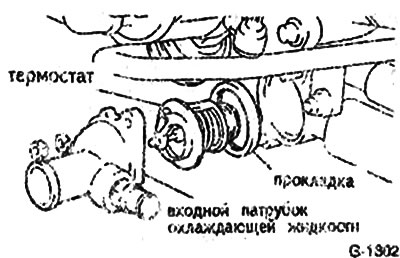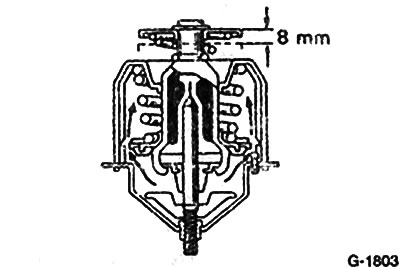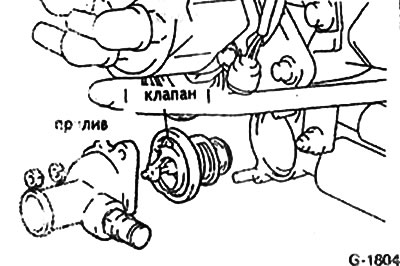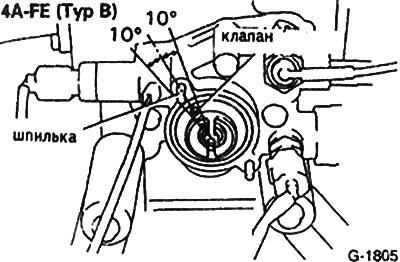Attention: If the engine overheats after a short drive, then the cause of this may be clogging of the internal cavities of the radiator with lime deposits, a failure of the electric fan or a broken fan drive belt (does not apply to diesel).
The thermostat is located on the left side of the engine in the cylinder head behind the coolant inlet.
Removing
Drain the coolant into a container, see section "Maintenance".
Disconnect the plug connection of the temperature sensor. The temperature sensor is located on the coolant outlet pipe.

Give two bolts (or two nuts) fasteners and remove the coolant outlet pipe with a temperature sensor.
Examination
Slowly heat the thermostat in a container of water. In this case, contact of the thermostat with the walls of the container should be excluded. The thermostat must be completely immersed in water. The water temperature should be controlled with a thermometer.
At a temperature of +82°C, the opening of the valve should begin.
Attention: Different designs of thermostats have different temperatures at which the valve starts to open. This temperature is stamped on the valve.

At +98°C the thermostat must be fully open. In this case, the valve must be raised to a height of at least 8 mm.
Check if the valve closes completely when the water cools. Otherwise, replace the thermostat.
Installation
Insert the thermostat into the housing with a new gasket.

Engine displacement 1.3 l since 8/84: Align the thermostat valve with the boss on the inlet pipe.

1.6L engine (4A-F, 4A-FE): Orient the valve towards the stud. Permissible angular deviation +10°.
Tighten two bolts (or nuts). Tightening torques: Petrol engine - 9 Nm; Diesel engine - 8 Nm.
Connect plug connection
Fill the system with coolant, see section "Maintenance".
Start and warm up the engine. Check pipes for tightness. Tighten screws if necessary.
